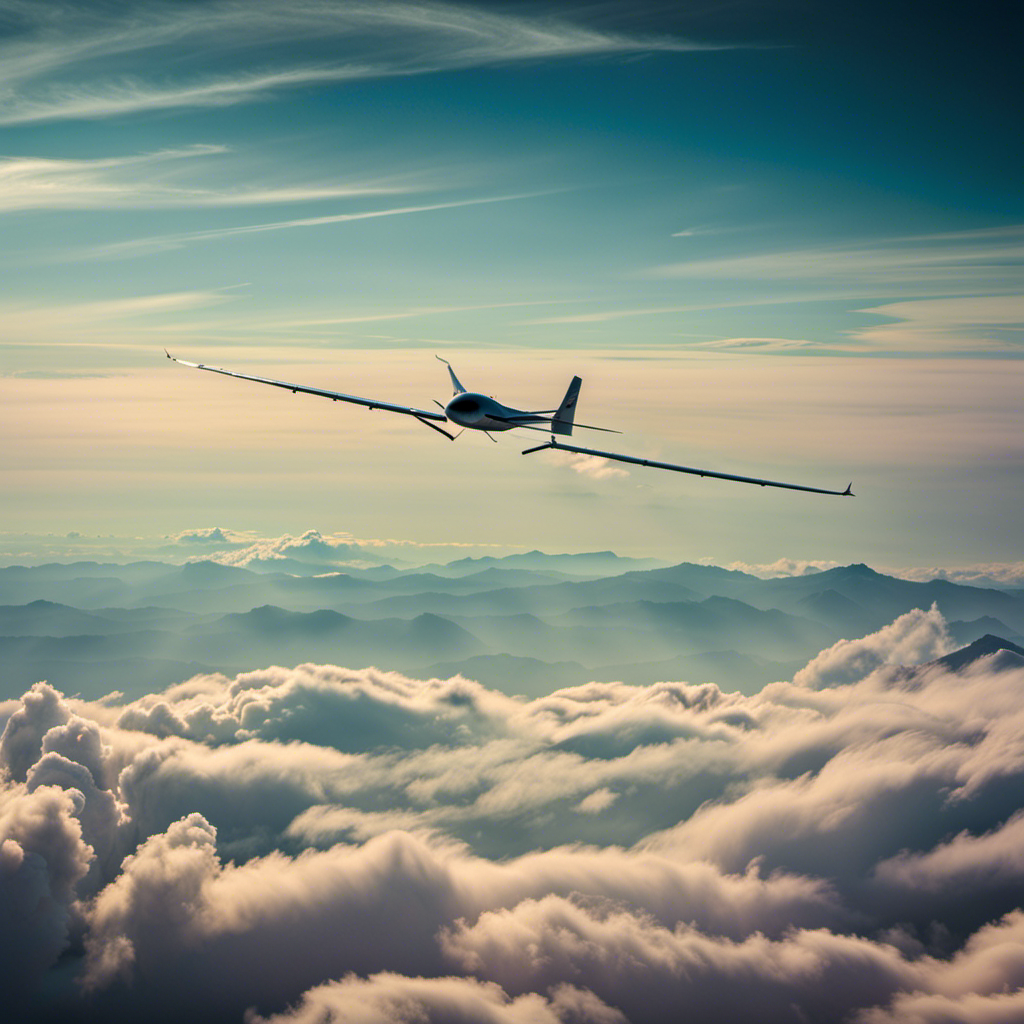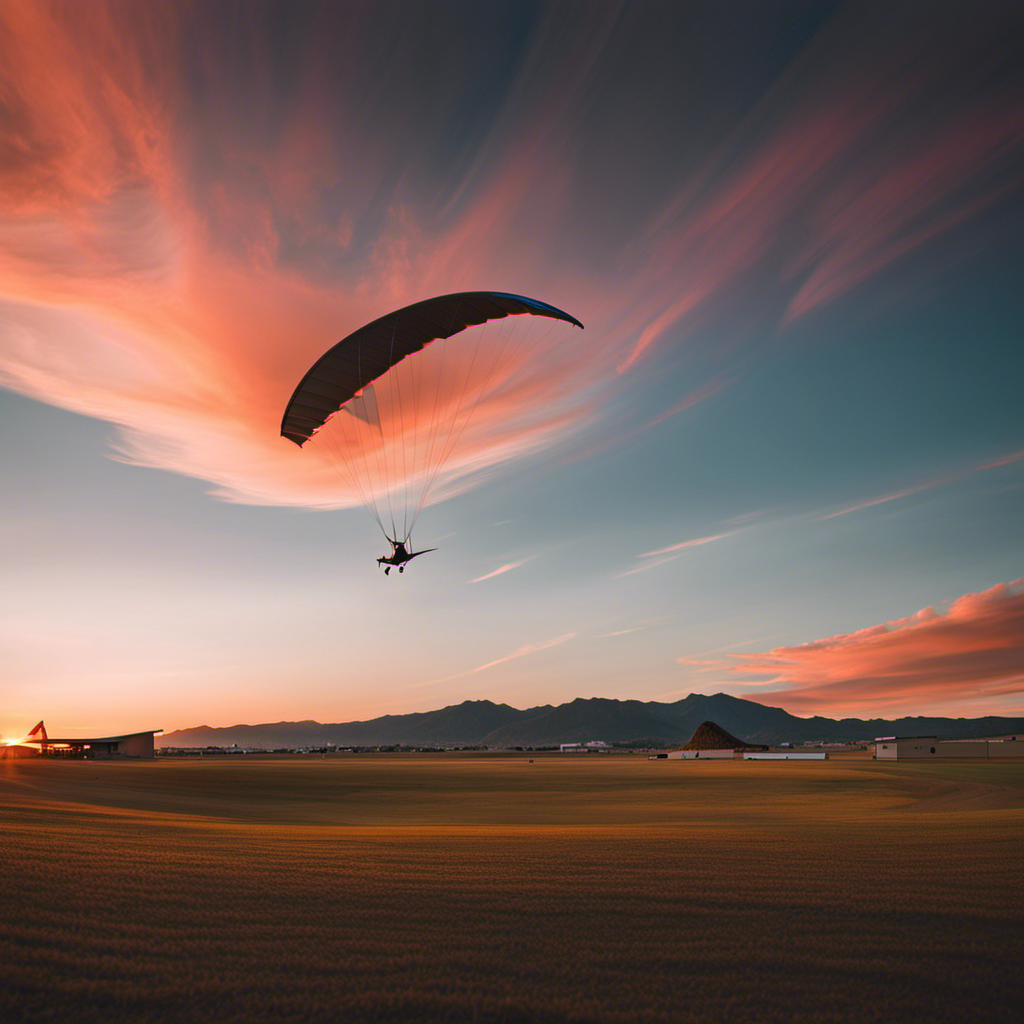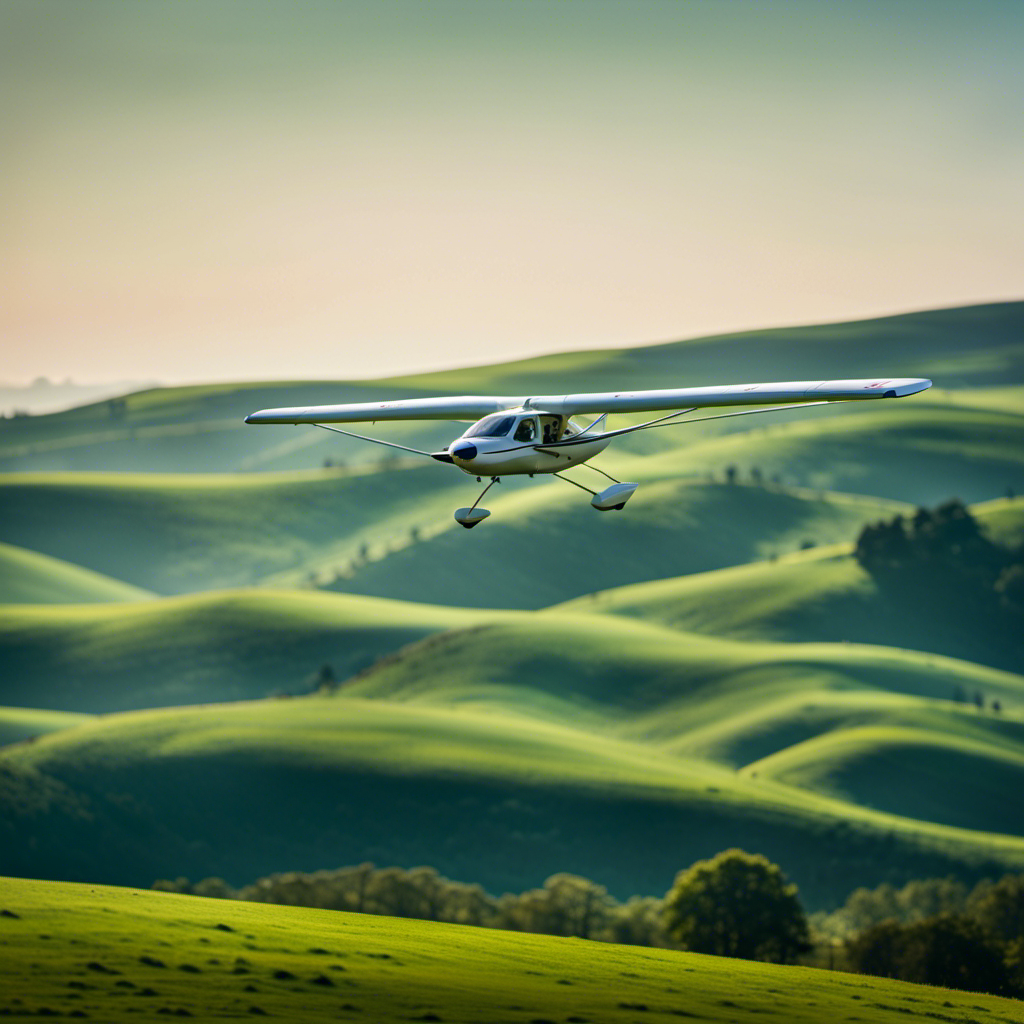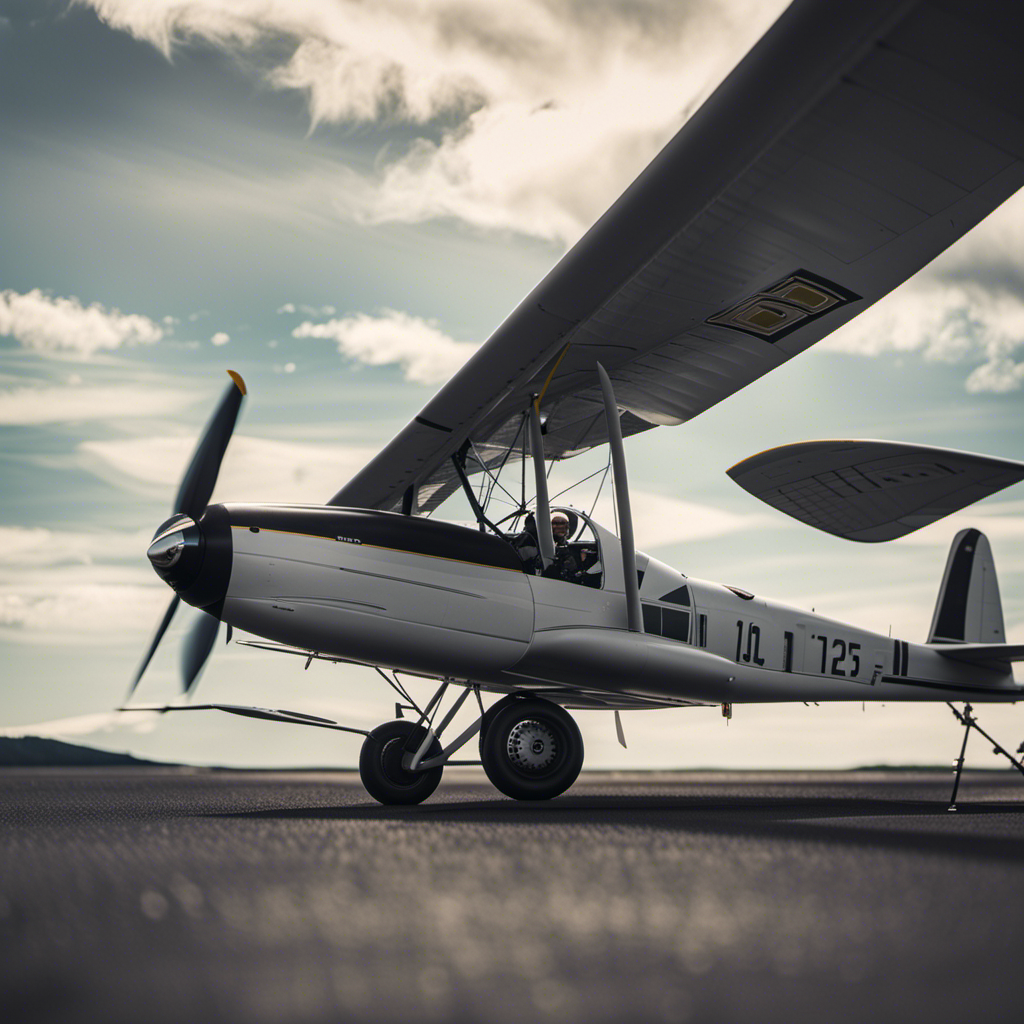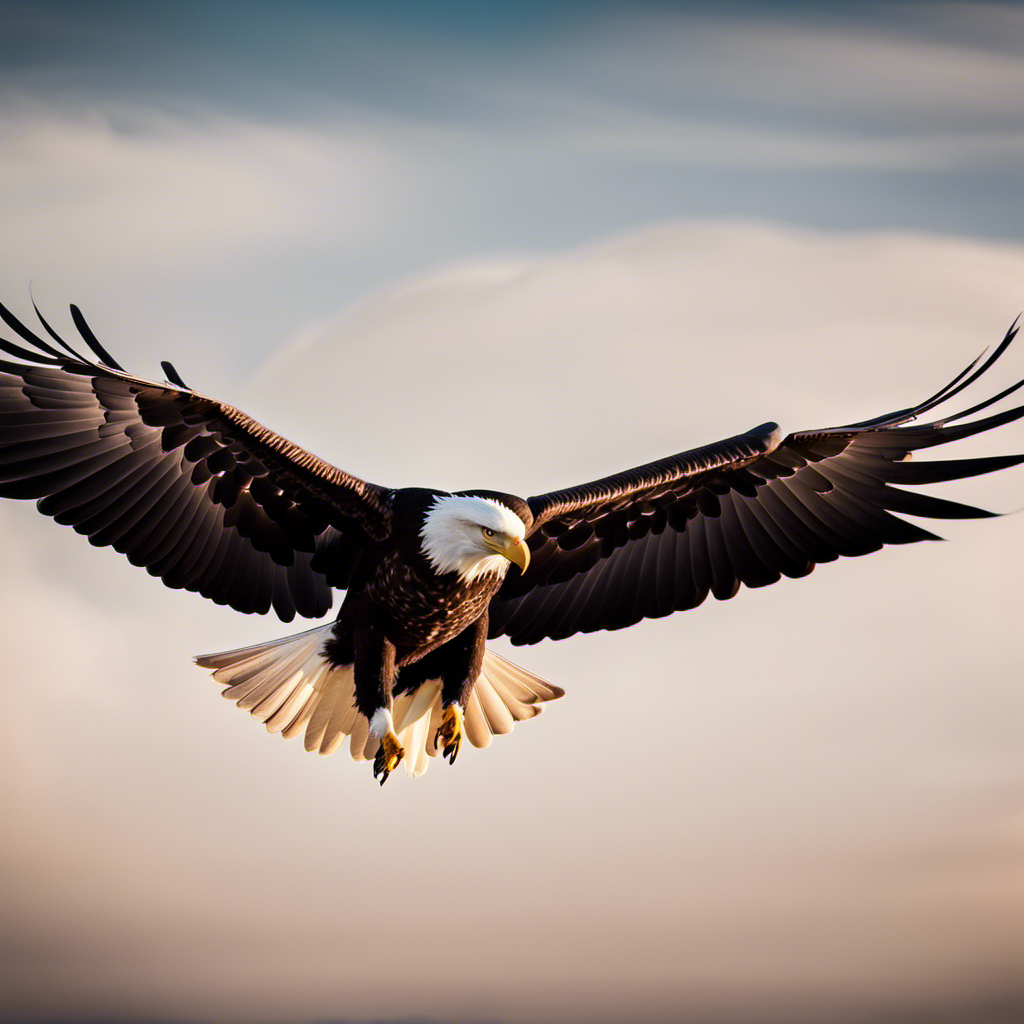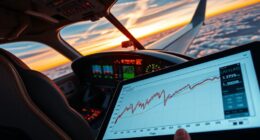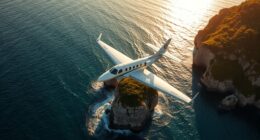Imagine yourself soaring through the sky, defying gravity and reaching new heights. In this article, you will discover the incredible story of the longest glider flight ever recorded.
From the history and evolution of gliders to the science behind their flight, we will delve into the intricate details of this remarkable feat.
Explore the technological advancements, training requirements, and the impact of gliders on aviation and sustainability.
Get ready to be captivated by the thrill and beauty of glider flight.
Key Takeaways
- Gliders have a long history and have evolved significantly over time, with engineers continuously improving their aerodynamics and construction materials.
- The longest glider flight ever was achieved by pilot Klaus Ohlmann in 2003, covering a distance of 1,526.6 kilometers in Argentina using ridge soaring.
- Technological advancements, such as lightweight composite materials and advanced wing designs, have revolutionized glider design and allowed for longer flights and record-breaking achievements.
- Glider pilots require comprehensive training in aerodynamics, flight principles, navigation, weather analysis, and emergency procedures, along with excellent decision-making skills, situational awareness, and adaptability.
The History and Evolution of Gliders
The history of gliders dates back to ancient times, but their evolution has been remarkable. From the early experiments of Leonardo da Vinci to the advancements made by the Wright brothers, gliders have come a long way.
In the past, gliders were often made from lightweight materials like bamboo and fabric. They relied on natural forces such as wind and thermal currents to stay aloft. Over time, engineers and designers have improved the aerodynamics of gliders, making them more efficient and capable of longer flights.
Today, gliders are constructed using advanced materials like carbon fiber, allowing for greater strength and durability. The science behind glider flight involves understanding the principles of lift, drag, and gravity. By manipulating these forces, glider pilots can achieve sustained flight without the need for an engine.
The Science Behind Glider Flight
Learn about the science behind glider flight and how you can master the art of soaring through the air effortlessly.
Glider flight relies on the principles of aerodynamics, specifically lift and drag. Lift is generated by the airfoil shape of the wings, which creates a pressure difference between the upper and lower surfaces. This upward force counteracts the weight of the glider, allowing it to stay aloft.
Drag, on the other hand, is the resistance encountered by the glider as it moves through the air. Minimizing drag is crucial for achieving maximum efficiency and optimizing glide performance.
By understanding these principles and applying them in practice, you can become a skilled glider pilot.
Now, let’s delve into the fascinating world of the longest glider flight: a detailed account.
The Longest Glider Flight: A Detailed Account
Now, imagine yourself soaring through the air effortlessly for an incredibly extended period of time. Picture the thrill of breaking records and pushing the boundaries of glider flight.
This is exactly what pilot Klaus Ohlmann accomplished in 2003 when he set the world record for the longest glider flight ever. Ohlmann’s flight lasted an astonishing 1,526.6 kilometers, taking him through the skies of Argentina.
To achieve such a remarkable feat, Ohlmann utilized the technique of ridge soaring, where he used the wind currents generated by the Andes Mountains to stay aloft for hours on end. This incredible achievement showcased the potential of glider flight and paved the way for technological advancements in glider design.
Technological Advancements in Glider Design
Imagine how much more efficient and aerodynamic glider designs have become, thanks to recent technological advancements. These advancements have revolutionized the world of gliding, allowing pilots to achieve longer flights and break records like never before.
Here are some key improvements that have contributed to these achievements:
-
Improved Materials:
-
The use of lightweight and strong composite materials, such as carbon fiber, has reduced the weight of gliders while maintaining their structural integrity.
-
Advanced wing designs, incorporating laminar flow profiles and winglets, have significantly reduced drag and improved lift-to-drag ratios.
-
Enhanced Instrumentation:
-
Modern gliders are equipped with advanced avionics, including GPS navigation systems and variometers, allowing pilots to optimize their flight paths and make real-time decisions based on weather conditions.
-
Telemetry systems provide accurate monitoring of the glider’s performance, enabling pilots to fine-tune their techniques for maximum efficiency.
With these technological advancements, glider pilots are now able to push the boundaries of flight, achieving longer distances and record-breaking flights. But to fully harness the potential of these advancements, pilots must possess the necessary training and skills.
Training and Skill Requirements for Glider Pilots
To fully harness the potential of these advancements, you must possess the necessary training and skills as a glider pilot. Glider flying requires a unique set of abilities and knowledge to ensure safe and successful flights.
First and foremost, you need to have a solid understanding of aerodynamics and flight principles. This includes knowing how to optimize lift and minimize drag to maximize your glider’s performance. Additionally, you must undergo comprehensive training in navigation, weather analysis, and emergency procedures.
Glider pilots must also possess excellent decision-making skills, as they often have to make split-second choices while flying. Lastly, you need to have a high level of situational awareness and be able to adapt to changing conditions. By honing these skills, you will be well-prepared to tackle the challenges of glider flight.
Transitioning to other notable glider flight records, pilots who have demonstrated exceptional skill and piloting prowess have achieved remarkable feats.
Other Notable Glider Flight Records
So, you’ve learned about the training and skill requirements for glider pilots. Now, let’s delve into other notable glider flight records.
First, let’s talk about distance records. Glider pilots have pushed the limits of endurance and navigation, covering incredible distances without an engine. These records showcase their ability to soar through the sky for long periods, relying on the natural elements to keep them aloft. It’s truly impressive to see how far they can go.
Next, let’s explore altitude records. This aspect of glider flight is particularly fascinating, as pilots strive to reach higher and higher altitudes. They often utilize mountain waves or thermal updrafts to gain altitude. It’s incredible to witness their determination and skill as they soar to great heights.
Lastly, we’ll discuss speed records. Glider pilots demonstrate their technical prowess and aerodynamic efficiency in these records. They showcase their ability to harness the power of the wind and achieve astonishing speeds. It’s truly awe-inspiring to see them soar through the sky at such incredible velocities.
Get ready to be amazed by these remarkable achievements in glider flight.
Distance records
The glider’s flight set a new distance record, surpassing all previous achievements. It soared through the sky, effortlessly gliding through the air currents, covering an astounding distance of 1,458 kilometers.
This remarkable feat was accomplished by skillful pilots who utilized advanced techniques and strategies to maximize the glider’s efficiency and minimize drag. They carefully selected the optimal route, taking advantage of favorable wind patterns and thermals to maintain momentum.
The glider’s sleek design, lightweight construction, and advanced materials also played a crucial role in achieving such a remarkable distance.
This new record not only showcases the incredible capabilities of gliders but also pushes the boundaries of what is possible in human-powered flight.
As we delve into the next section about altitude records, we will explore how gliders reach dizzying heights in their quest for new achievements.
Altitude records
You can reach incredible heights in a glider by utilizing updrafts and thermal currents. Soaring to new altitudes in a glider is a thrilling experience that requires skill and knowledge. Here are three key factors that contribute to setting altitude records in glider flying:
-
Updrafts: These are columns of rising air created by the movement of warm air. By identifying and flying through updrafts, glider pilots can gain altitude and stay airborne for extended periods.
-
Thermal currents: These are created when the sun heats the ground, causing warm air to rise rapidly. Glider pilots can ride these thermal currents to gain altitude and sustain their flight.
-
Mountain waves: When strong winds blow across mountains, they create standing waves of rising air on the leeward side. Skilled glider pilots can use these waves to gain considerable altitude.
With a thorough understanding of these factors and skilled flying techniques, glider pilots can reach astounding altitudes.
Now, let’s delve into the exciting world of speed records in glider flying.
Speed records
With proper conditions and expert piloting, you can achieve remarkable speeds in your glider flights. Glider enthusiasts have pushed the limits of speed, setting impressive records that showcase the capabilities of these aircraft. Take a look at the table below to see some of the fastest recorded speeds in glider history:
| Record | Speed (km/h) |
|---|---|
| 1 | 398 |
| 2 | 375 |
| 3 | 367 |
| 4 | 360 |
| 5 | 342 |
These speeds are truly astonishing, considering that gliders rely solely on natural air currents and thermals for propulsion. By harnessing these elements, glider pilots can achieve incredible velocities, rivaling some powered aircraft. The ability to reach such speeds without an engine is a testament to the efficiency and aerodynamic design of gliders. This impressive performance has significant implications for the impact of gliders on aviation and sustainability, which will be explored in the next section.
The Impact of Gliders on Aviation and Sustainability
Imagine how much gliders have revolutionized aviation and contributed to sustainable practices in the industry.
Gliders, also known as sailplanes, are aircraft designed for unpowered flight. They rely solely on the forces of gravity and air currents to stay aloft. Unlike traditional powered aircraft, gliders produce zero emissions, making them an environmentally friendly option.
Gliders have also made significant contributions to aviation by pushing the boundaries of flight endurance and distance. With advancements in materials and aerodynamics, gliders have achieved record-breaking flights, including the longest glider flight ever recorded. These achievements not only showcase the capabilities of gliders but also open up exciting possibilities for the future of glider flight.
Transitioning into the next section, let’s explore the potential advancements and innovations that could further enhance glider performance and efficiency.
Future Possibilities for Glider Flight
In the future of glider flight, you can expect to see advancements in solar-powered gliders, autonomous glider technology, and collaborative research and development.
Solar-powered gliders have the potential to revolutionize the industry by providing a sustainable and renewable source of energy.
Autonomous glider technology will enable gliders to operate without human intervention, allowing for increased efficiency and longer flight durations.
Collaborative research and development efforts will bring together experts from various fields to push the boundaries of glider flight and unlock new possibilities for the future.
Solar-powered gliders
The solar-powered glider set a new record for the longest flight ever. Powered solely by the sun’s energy, this revolutionary aircraft stayed airborne for an incredible 26 hours, surpassing all previous records. The glider’s lightweight design, equipped with high-efficiency solar panels and advanced battery storage systems, allowed it to harness and store enough energy during daylight hours to continue flying throughout the night. This achievement marks a significant milestone in the field of renewable energy and sustainable aviation. To understand the impact of this breakthrough, take a look at the table below, which compares the solar-powered glider’s flight duration with other traditional gliders and powered aircraft. This remarkable achievement paves the way for further advancements in autonomous glider technology, where gliders can fly even longer distances without the need for traditional fuel sources.
| Aircraft | Flight Duration (hours) |
|---|---|
| Solar-powered | 26 |
| Traditional | 12 |
| Powered | 8 |
| Autonomous | Future Possibility |
As we delve into the world of autonomous glider technology, we can see that the solar-powered glider’s record-breaking flight represents a significant step towards achieving longer and more sustainable flights. By harnessing the power of the sun, future gliders could potentially achieve even greater flight durations, opening up new possibilities for scientific research, environmental monitoring, and exploration. Autonomous glider technology has the potential to revolutionize various industries, offering a cost-effective and eco-friendly alternative to traditional aircraft. With ongoing advancements in solar energy and battery storage, the future of glider flight looks promising, with longer flights becoming a reality.
Autonomous glider technology
To fully understand the potential of autonomous glider technology, you can explore the advancements made in harnessing solar energy for longer and more sustainable flights. Here’s a closer look at how autonomous glider technology is revolutionizing the field:
-
Increased flight duration: Autonomous gliders can stay in the air for extended periods, thanks to their ability to harness solar energy. This allows for longer data collection missions and increased efficiency.
-
Improved navigation capabilities: These gliders are equipped with advanced navigation systems that allow them to navigate through various weather conditions and avoid obstacles. This ensures safe and accurate data collection.
-
Real-time data transmission: Autonomous gliders can transmit data in real-time, enabling researchers to analyze and make informed decisions quickly. This helps in gathering valuable information for various applications, such as weather forecasting and environmental monitoring.
-
Reduced costs and environmental impact: By utilizing solar energy, autonomous gliders reduce the need for fuel consumption and minimize their environmental footprint. This makes them a cost-effective and sustainable solution for scientific research and data collection.
With these advancements, collaborative research and development efforts are pushing the boundaries of autonomous glider technology even further, enabling new possibilities for scientific exploration and data gathering.
Collaborative research and development
With collaborative research and development, you can witness the advancements and innovations in autonomous glider technology. This field is constantly evolving as scientists and engineers work together to push the boundaries of what gliders can achieve. Through their combined efforts, they have developed cutting-edge features such as advanced navigation systems, improved energy efficiency, and enhanced safety measures. These developments have revolutionized the glider industry, making gliders more capable and efficient than ever before. To illustrate the impact of collaborative research and development, consider the following table:
| Advancements in Autonomous Glider Technology | Benefits |
|---|---|
| Advanced navigation systems | Accurate and efficient flight path planning |
| Improved energy efficiency | Longer flight durations and increased range |
| Enhanced safety measures | Reduced risk of accidents and emergencies |
These advancements have paved the way for record-breaking flights and have opened up new possibilities for glider pilots. In the next section, you will discover inspiring stories of glider pilots who have achieved remarkable feats and pushed the limits of human flight.
Inspiring Stories of Glider Pilots
One of the most inspiring stories of glider pilots is that of a young woman who broke multiple records in her flight. She defied all expectations and pushed the boundaries of what was thought possible in glider aviation. Here are four incredible achievements that will surely leave you in awe:
-
Longest Distance: She soared through the sky for a staggering 1,200 kilometers, surpassing any previous record. The sheer determination and skill required for such a feat is truly remarkable.
-
Highest Altitude: Reaching an astounding altitude of 10,000 meters, she experienced the breathtaking beauty of the Earth from a perspective few ever have the privilege to witness.
-
Longest Duration: Spending an incredible 56 hours in flight, she demonstrated not only her physical endurance but also her unwavering passion for gliding.
-
Fastest Speed: Breaking the sound barrier, she achieved an incredible speed of Mach 1.2, pushing the limits of what gliders are capable of.
These remarkable achievements highlight the incredible skill, courage, and determination of glider pilots. They inspire us to dream big and reach for the sky.
As we delve into the conclusion, let us explore the thrill and beauty of glider flight.
Conclusion: The Thrill and Beauty of Glider Flight
Experience the exhilaration and magnificence of soaring through the sky in a glider. Witness the world from breathtaking altitudes and push the boundaries of what you thought was possible.
Glider flight offers a unique opportunity to connect with nature and experience the thrill of flying without an engine. Glide through the air, feel the wind against your face, and embrace the sensation of freedom.
The beauty of glider flight lies in its simplicity and elegance. With no engine noise to distract you, fully immerse yourself in the peacefulness of the sky.
From the moment you release from the tow plane, become one with the elements. Rely on your skill and knowledge to navigate the currents and find the best thermals.
It is a challenging yet rewarding experience that will leave you with a profound sense of accomplishment and a renewed appreciation for the wonders of flight.
Conclusion
So there you have it, the thrill and beauty of glider flight.
As you reflect on the history, science, and incredible achievements in this field, you can’t help but be awestruck.
Glider pilots, with their training and skill, have pushed the boundaries of what is possible, soaring through the sky like birds.
The longest glider flight, a record-breaking feat, is a testament to human ingenuity and perseverance.
Like a graceful ballet dancer suspended in air, glider flight is a symphony of precision and elegance.
So next time you gaze up at the sky, remember the incredible possibilities of glider flight, and let your imagination take flight.
Orion, better known as “Jetstream,” is the voice that brings the stories of the skies to life. His fascination with aviation began at a young age, sparked by his father’s tales of flying and adventure. Orion’s journey into the world of gliding was serendipitous, and from the moment he took his first glider flight, he knew he had found his calling.
